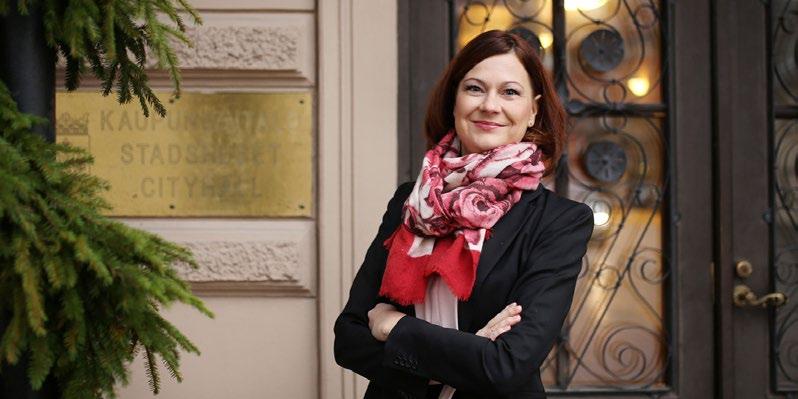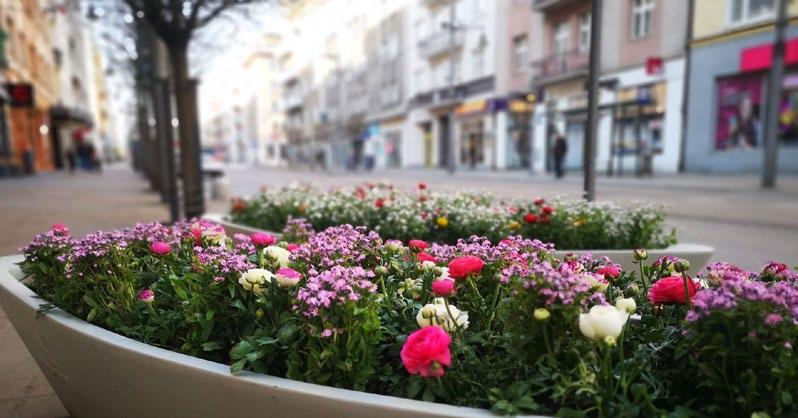
7 minute read
Residents of St. Petersburg unite to change the city
RESIDENTS OF SAINT PETERSBURG UNITE TO CHANGE
THE CITY by Anton Zaytsev | press@cleangames.ru
Advertisement
During the COVID-19 Pandemic people of Saint-Petersburg had to spend time within the apartments` walls. However, the city is awakening after the lockdown and the need for developing its territories becomes apparent. Often local activists take the reins and transform public places.
People of a Saint-Petersburg district noticed mysterious trucks driving past their windows. Initiative group ”ZaBereg” has begun an investigation and found unauthorized dumps on the Krasnenkaya River’s banks. 40 hectares are hidden under a six-meter mountain of waste despite the fact that endangered plants and nesting birds were found at the mouth of the river.
The activists came up with a shoreline development plan, which has received a grant. Not only were experts invited to work on the project but the ”ZaBereg” group has even held sessions of participatory design, that is when ordinary people are engaged in discussions and share their views on the territories` future. The activists have started with cleaning up the banks and held Clean Games. In 2020 100 participants collected over a ton of waste!
Another story of transformation is happening on the Makarova Embankment: thanks to the Clean Games project an initiative group ”Zarosli” appeared, and now it works on making the green zone cozy and safe. Activists say, ”Now this part of the embankment looks abandoned, but we have held Clean Games twice and collected hundreds of bags full with garbage. The place does not look like a resting zone so far, and local authorities are going to build a highway through it. But we believe we can save the embankment and create a comfortable park here!” The team of the volunteer corps of Saint-Petersburg Mining University managed to attract public attention to the shores of Smolenka. ”The territory along the river could become a place for sports and recreation. Thanks to Clean Games we have already cleaned several points, and now the projects of building up Smolenka banks are slowed down”, says Victoria Kapustina, the volunteer corps leader. Thanks to their dedicated work and desire to show how attractive former dumb can be, both locals and authorities changed their indifferent attitude.
The city is changing together with its people. Saint-Petersburg, so called ”Northern Venezia”, has suffered from dirty waters and shores for too long. But the start line of transformation has already been crossed.
Some inspiring stories on heading towards the energyefficient urban areas of the future from the Baltic Sea Region’s Area 21 plus project.

First of all, they identified the problem, which was important to all of them, regardless of the country they come from and the field of expertise, they represent. Then, they started discussing and brainstorming the potential solutions, which led to a transnational project, the results of which can easily contribute to increasing prosperity of the Baltic Sea Region member states and beyond.
The problem was the low rate of energy efficiency renovations and unused energy saving potentials in the buildings in the Baltic Sea Region, and in general in the EU countries. The project is AREA 21 + action.
United for a common goal to advance renovations or other energy efficiency measures for the existing buildings, ten different actors from six countries across the Baltic Sea Region teamed up to develop and test an instrument to facilitate energy efficiency actions at the district level. This is how the “Energy Improvement District (EID) concept” was born, the Project’s great contribution to the EUBSRS’s Policy Area’s Energy. The concept seems even more actual after the updated EUSBSR Action Plan came into force in February 2021 and the PA Energy’s action number one is all about „streamlining efforts on energy efficiency in the region by deepening regional cooperation“.
”With help of the EID concept, actors in EU cities can identify case-specific needs and potentials to increase energy efficiency at the district level, bringing together private and public actors, academia, public administration, SMEs, local energy providers and citizens to generate beneficial collaboration by creating context-specific strategies and actions in the respective Energy Improvement Districts’”, Jonas Fisher from the Lead-Partner HafenCity University Hamburg explains.
But the project is also very much practice-oriented, with an emphasis on easily replicable solutions and concrete examples of actions that can demonstrate what implementation of its concept of Energy Improvement District really means.
Our transnational collaboration, involving partners from Estonia, Finland, Germany, Poland, Russia, and Sweden, allows us to commonly develop and test the EID instrument building on existent partners’ expertise and institutions, share experiences and finally use the outcome to demonstrate a method to address commonly experienced challenges in the BSR countries’, Jonas adds.
In the city of Tampere, Finland the partners from the local university and a city council have been responsible for developing and piloting new action models for helping and encouraging building owners to take energy actions. Today, after some years of dedicated work they are very proud to have helped building owners to reduce their emissions and energy bills and have a good tip to others that want to promote energy-efficient solutions: ‘If building owners knew how profitable the actions are, they would all do them!’
It turned out that the challenges are very common, although identified across different groups of stakeholders. They covered issues like lack of knowledge, lack of economic motivation and engagement, or finally lack of good and clear communication.
by By Marta Czarnecka-Gallas, Let’s Communicate! project| m.czarnecka-gallas@pomorskieregion.eu
energy efficiency and energy consumption topics is a very challenging task. ‘Our main role is to offer support and assistance to housing associations and property owners in the processes of planning and decision making. It was not so surprising, but rather recognizing that good and clear communication is the key in terms of successful results. Lack of clear communication leads quickly to loss of interest of property owners, even if they are presumably the most interested party in improving their living conditions. Finding joint points of interest and common language has to lead us to the phase of successful implementation of planned activities’, Jana Viital from the city’s urban development department explains.

In Peter the Great Saint-Petersburg Polytechnic University, which was another pilot area, the problems seemed even bigger. Because how can you convince students and teachers to save energy if they do not pay for consumed resources? Have they had there any success? Definitely, Yury Nurulin confirms and says what in particular he is proud of: We helped to bring various points of views together - students realized how much was being done by the University to provide comfortable conditions for education and living in the dormitory, the University services departments started considering students as an “active users” (stakeholders) which should be informed and involved in energy-saving activities even if they do not have direct economic motivation’. Quite a similar approach was adopted in Helsingborg, Sweden, where the Project’s partner - the local energy utility Öresundskraft supports the Region Skåne and its regional hospital with knowledge and strategic dialogues. ‘We are very proud to have established the interest in energy at the hospital as well as the EID-concept in our organisations. We have talked about the importance of viewing energy from a holistic position for a long time, and thanks to the Area21 project we now have proof of a practical example as well’.
The partners were quite surprised by the great interest among the end-users (hospital departments) to be involved in the work and the benefits of working together as energy utility and property owner. ‘It is great to see our organisations as partners, developing solutions together and sharing equally its generated profits. Just like the 17th UN’s goal of sustainability!’, concludes Anna Sundberg from Öresundskraft.
With a bunch of successful stories and concrete tools that can be used in our organizations/sectors and countries, the Area 21 + project’s partners are convinced that their experiences can be followed by others, contributing to more energy-efficient urban areas of the future. ‘Change of mindset requires continuous networking and well-coordinated cooperation between stakeholders’- they claim and still see a lot to do about that after finalization of the project.











